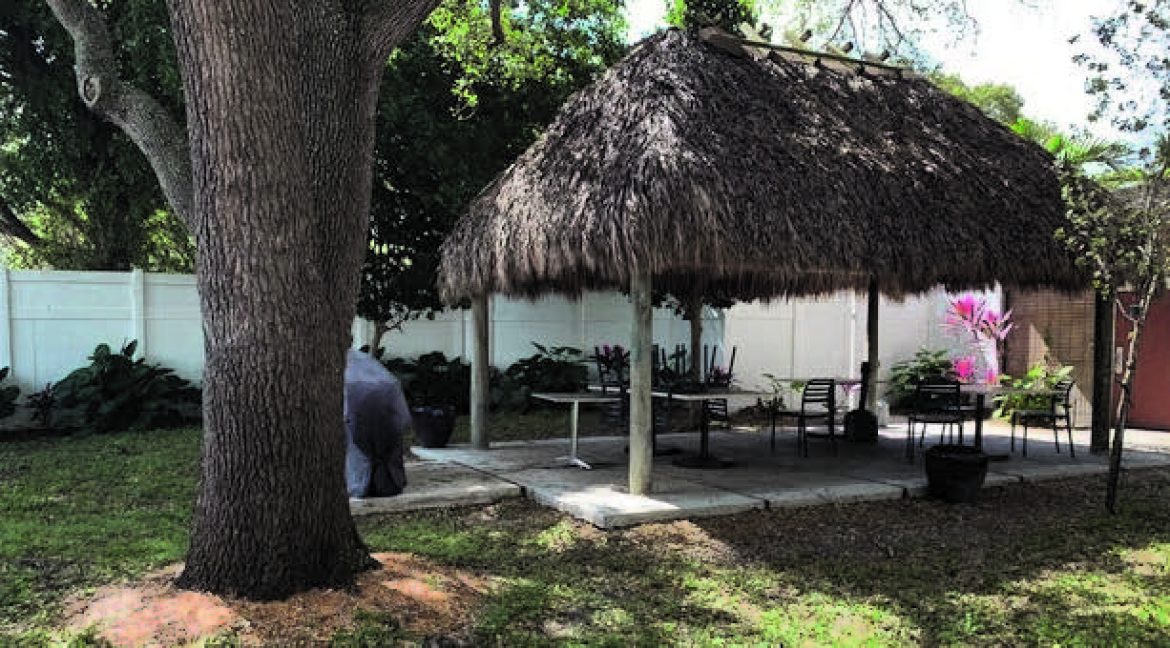A beautification project to improve unkempt areas on the east end of Lincoln Road between the commercial district and the beach walk is advancing with the help of the owners of the Ritz-Carlton and the Sagamore South Beach hotels, who are investing millions of dollars.
The owners of the Ritz-Carlton, at 1 Lincoln Road, and the Sagamore South Beach, at 1671 Collins Ave., started plans to revitalize Lincoln Road’s 100, 200 and 300 blocks, hiring a team of consultants headed by planning and design consultants Kimley-Horn and architect Raymond Jungles, who designed the 1111 Lincoln Road (street closure) project.
The Ritz-Carlton, owned by Peter Kanavos, has invested private funds for the pre-development costs, including the consultant report and the vision and material design of the project, which aims to “restore a safe, upscale residential fabric with a sense of place to a district overbalanced by tourism,” according to communications from the hotel.
“We noticed for some time that the area around us was deteriorating,” said Mr. Kanavos, “and we also had been feeling for some time that our neighborhood needed more residents. As someone in the hospitality business, I know it sounds a little odd.”
Lincoln Road would thrive as a neighborhood with a more balanced mix between residents and the tourism industry, he said, because residents have a permanent stake in the community.
“So, we started looking at the surrounding area and said, ‘how can we make this area as dynamic as the plans that we have for our own hotel, our own block?’ And then we started thinking about the 200 to 300 blocks, and the fact that for 70 years now, since Morris Lapidus converted the Lincoln Road into a pedestrian mall, these last three blocks have not really been part of that, physically or functionally.”
The project would also seek to improve traffic flow and aesthetics on the 100 block of Lincoln Road, promoting more and better pedestrian access to the beach for residents and visitors. The block would remain open to vehicular traffic, but with an improved design of its landscaping, traffic flow and a realignment of the beach entrance.
It would also create “one of the largest continuous greenbelts in the US by connecting the garden ways of the Lincoln Road mall with the beach walk and provide residents and tourists with the ability to enjoy the commercial and natural pedestrian experience of an ‘emerald necklace’,” as the communications stated.
The aim, Mr. Kanavos said, is to connect the Lincoln Road mall to the beach, taking “the very central part of the city, the doorway to Lincoln Road, and really make it a showcase, which it really should have been.”
The Ritz-Carlton team also wants to create a park at the back entrance of the hotel, at the end of walkway to the beach. “We are looking at putting up an archway that was conceived by Morris Lapidus (who also designed the Ritz-Carlton) but never realized.”
The Lincoln Road renewal project would close the 200-300 blocks of Lincoln Road to vehicles, extending the pedestrian experience over the entire area. The redesign of those blocks would reinvigorate and increase business with a pedestrian garden way and other features, according to the project’s communications.
A residential component is also planned along the beach walk by the hotel, said Mr. Kanavos, following other developments, such as the Shore Club adding a residential tower with 65 hotel suites and 80 apartments.
The project, finally, aims to eliminate the blight and crime that is affecting the area, attract new private investment to upgrade businesses and provide more public showcases for the arts.
“We’re received nothing but support from the community,” said Mr. Kanavos. “The biggest hurdle is going to be, at the end of the day, finding the financing to start construction of the project,” which is projected to cost $23 million, covered in partnership with the city.
The project, he added, needs to pass the city Finance and Economic Resiliency, Land Use and Sustainability and Neighborhoods/Community Affairs committees. “I expect our upcoming committee meeting (Dec. 14) to go well,” he said, “and hopefully at that point, they will refer the project to the city administration to begin negotiating with us on the development agreement.”
In the 1980s, the Miami Design Preservation League commissioned a study, paid for by the city, where it recognized Lincoln Road as the central node in the city that connects the other activity sectors to the north and south, said Mr. Kanavos. “The logical connector between these developed nodes of activity is where we are. We have to functionally and aesthetically look the part. We’re essentially fulfilling the promise of that study that was done to take this central node of the city and really make it the flow-through connector, rather than the choke point that it is today.”
Source: Miami Today

